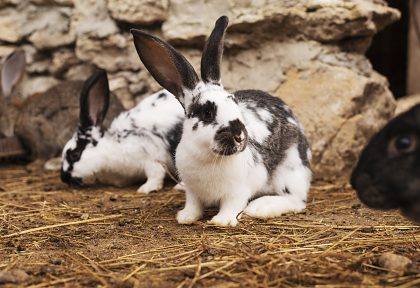
The aim of the survey was to find out the number of rabbits kept in Slovak households. This information is important for us to supplement statistical data and subsequently improve the quality of inputs for the national inventories of greenhouse gases and inventories of air pollutants. Also, they can be reported under the Convention on Long-Range Transboundary Air Pollution (CLRTAP), Directive No. 2016/2284 on the reduction of national emissions of certain air pollutants and Regulation of the EP and the Council on the management of the Energy Union No. 2018/1999 in Article 26(2).
Basic data on the number of rabbit breeders in households did not exist in the Slovak Republic. The AKO agency proposed a combined hybrid solution for data collection using the CAWI method (online survey), in which there are approximately 10,000 members, with the question - whether they have (keep) a rabbit/s in their household. Those who answered that they keep a rabbit during the screening were subsequently asked questions from our questionnaire. In this way, 250 answers were obtained, i.e. suitable respondents for the second round of research. The second round was carried out by telephone method (CATI method), in which a representative sample of the adult population of the Slovak Republic (N=1,000 adult inhabitants of the Slovak Republic) was addressed with the same question - whether they keep rabbits. This method was used for determination of the percentage of rabbit breeders in the Slovak population. We assumed that from a representative survey sample of 1,000 respondents, through screening we would obtain 10-50 suitable respondents (rabbit breeders). In the end, it was possible to get answers from 83 respondents, which is a great success.
The survey shows that approx. 8.3% of Slovak households breed rabbits (3% for pleasure, 0.4% for exhibitions, 4.9% for meat), of which the majority are bred in the countryside (61%), followed by breeding in cities (35%) and 4% of households stated both options.
In the prepared questionnaire, we were also interested in the regional representation of households and the method of raising rabbits (free range, housing). The results showed that housing with restriction of movement is the predominant breeding method. Housing without restriction of movement is higher in cities compared to rural areas, while in households that mentioned both options, free breeding is absent. You can see the results in the prepared graphic.

